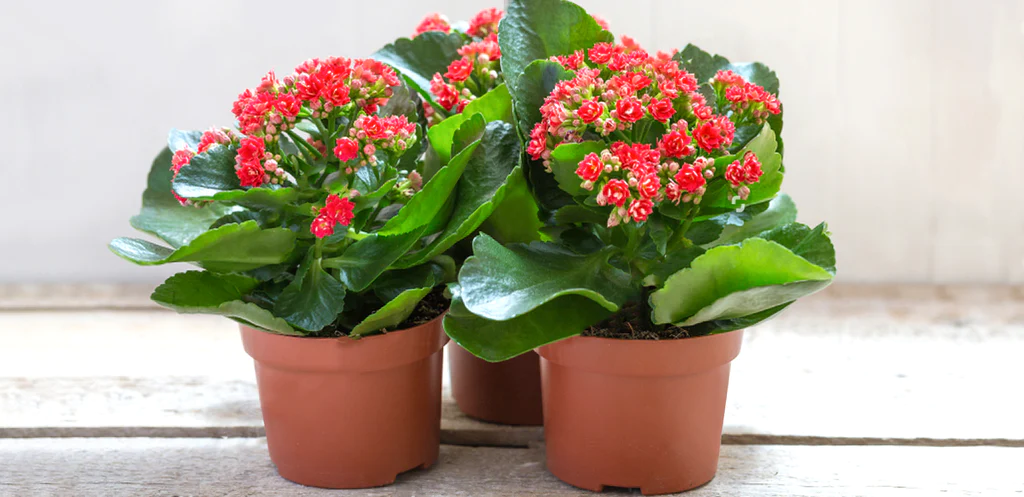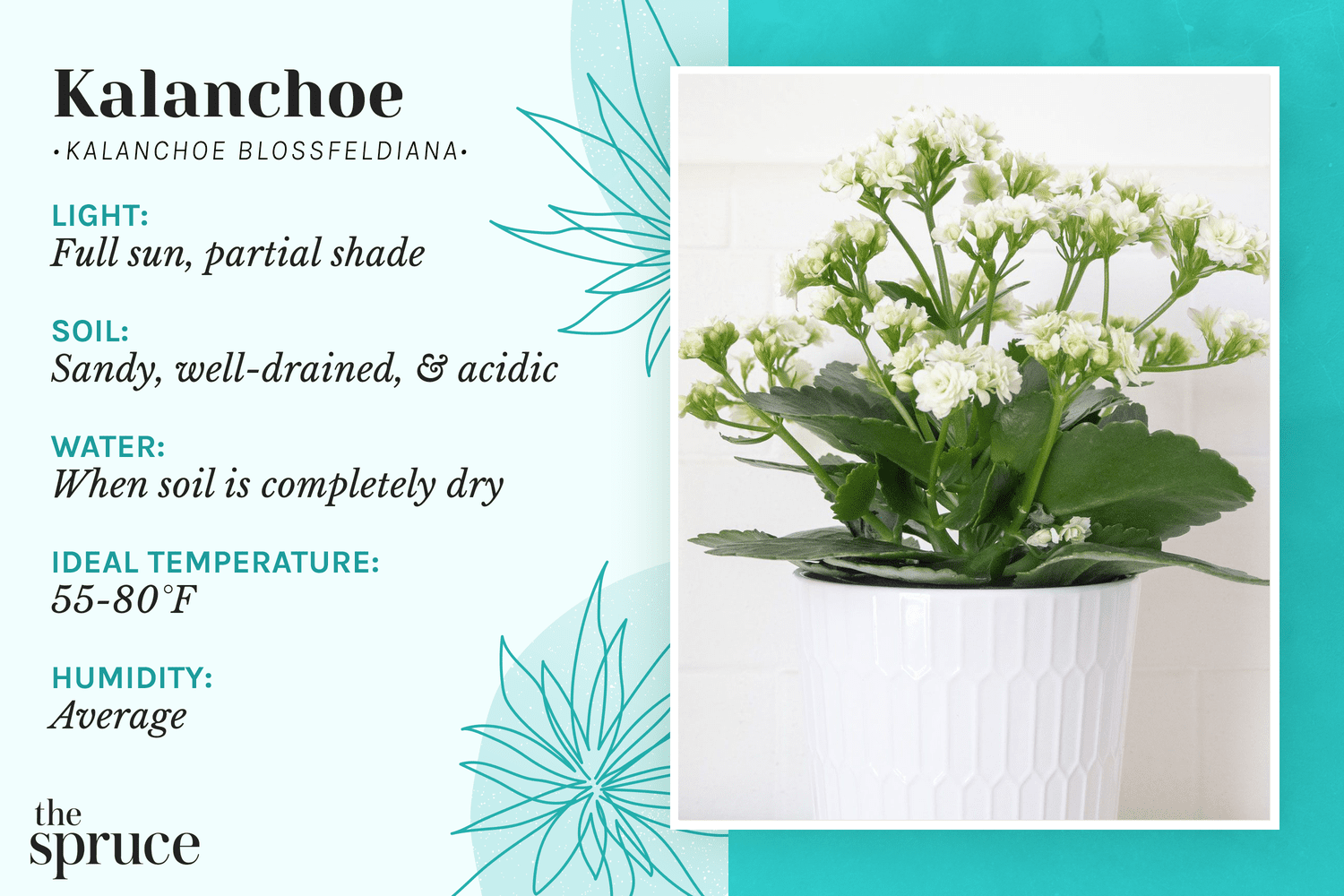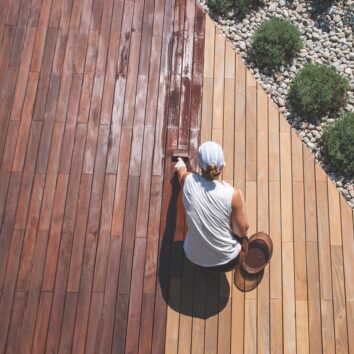How to Grow and Care for Kalanchoe
Kalanchoe is a genus of plants native to Madagascar, with over 200 species of succulents. It is renowned for its bright, colorful flowers and is a popular houseplant due to its easy maintenance and care. Growing Kalanchoe is easy and can even be done from stem cuttings. It thrives in warm temperatures and bright, indirect sunlight, so it’s best to keep your plant away from drafts and direct sunlight. Water your Kalanchoe when the soil has almost completely dried out, and fertilize it with a balanced houseplant fertilizer. With the right care, your Kalanchoe will continue to bloom and add some brightness to your home.
Selecting the Right Kalanchoe Plant
Kalanchoe plants are a beautiful and easy-to-care-for addition to any home or office. With their vibrant colors and diverse shapes, these succulents are popular for any room. When selecting the right Kalanchoe plant for you, there are a few things to consider. First, decide if you want a flowering or non-flowering variety. Flowering Kalanchoes come in a range of colors, from pastel pinks to bright oranges. Non-flowering varieties feature interesting foliage, such as variegated leaves or waxy surfaces. Additionally, think about where you plan to place your plant and the amount of sunlight and water it will need. Finally, select a size that is appropriate for the space you have available. By considering these factors, you can find the perfect Kalanchoe plant for your home or office.

Caring for Your Kalanchoe
Kalanchoe plants are a popular choice for houseplant lovers, with their bright, vibrant flowers and low-maintenance characteristics. However, to ensure your Kalanchoe flowers stay healthy and vibrant, proper care is necessary. To keep your Kalanchoe looking its best, make sure to place it in a well-lit spot, water it regularly, and fertilize it every other month. Additionally, make sure to deadhead any wilted flowers and remove any yellowing leaves. With proper care and maintenance, your Kalanchoe will bring you years of beautiful blooms.
Watering and Humidity Requirements
Watering and humidity requirements are important factors in ensuring your plants stay in top condition. Watering too little or too much can lead to nutrient deficiencies, wilting, and other issues. Humidity, or the amount of moisture in the air, is also important for some types of plants. High humidity can cause fungal diseases, while low humidity can cause leaves to dry out and drop off. The best way to ensure that your plants are getting the correct amount of water and humidity is to monitor them regularly and adjust as needed. With the right combination of water, humidity, and light, your plants will thrive and reward you with beautiful flowers, lush foliage, and a healthy, vibrant garden.
Feeding and Fertilizing Kalanchoe
Kalanchoe is one of the most popular houseplants around and with good reason. Not only is it easy to care for, but it also produces beautiful flowers that come in a variety of stunning colors. To ensure that your Kalanchoe is healthy and blooms for years to come, it’s important to feed and fertilize it properly. During the growing season, feed your Kalanchoe with a balanced liquid fertilizer every other week. For best results, use a fertilizer specifically formulated for blooming plants. During the dormant season, reduce fertilizer applications to once every two months. Also, make sure to water your Kalanchoe regularly and thoroughly, allowing the soil to dry out slightly between waterings. With proper care and feeding, your Kalanchoe will be a beautiful addition to your home for many years to come.
:max_bytes(150000):strip_icc()/growing-kalanchoe-plants-1902982-hero-da950f5afb5645fdb60151d859d53df0.jpg)
Pruning and Propagating Kalanchoe
Pruning and propagating Kalanchoe is an essential part of keeping this succulent looking its best. This low-maintenance plant is a great choice for busy gardeners or those with limited space. Pruning is needed to remove dead or damaged leaves and to encourage new growth. Propagation involves taking cuttings and growing them into new plants. With just a few simple supplies and a bit of patience, you can enjoy a thriving, healthy Kalanchoe plant that will last for years to come. Not only is this an economical way to have a beautiful garden, but it’s also a great way to learn more about plant care and propagation.
Common Diseases and Pests
The blog section “Common Diseases and Pests” provides a comprehensive overview of the most prevalent health issues and pests that can affect our daily lives. This section covers both preventative measures and treatments for common medical conditions, as well as advice on how to control and manage household pests. With detailed explanations and easy-to-understand tips, this blog section provides invaluable insight to help ensure a healthy and pest-free environment for you and your family.
Troubleshooting Tips and Tricks
The blog section “Troubleshooting Tips and Tricks” offers readers helpful advice on how to troubleshoot and resolve common technical problems. Here, readers will find practical solutions to common issues, as well as expert guidance on how to properly identify the root cause of an issue and take the necessary steps to fix it. Whether you’re a novice or an expert, this blog section will provide you with the information you need to solve your tech problems quickly and efficiently. It’s the perfect resource for those who want to stay up-to-date on the latest troubleshooting techniques and tools.
Re-Potting and Repositioning Kalanchoe
As summer approaches, it’s the perfect time to re-pot and reposition your Kalanchoe. This tropical plant is an excellent addition to any home décor, and it’s easy to care for and maintain. When re-potting, use a larger pot than the one the plant is currently in and fill it with a well-draining potting mix. When repositioning, place the Kalanchoe in a spot that gets plenty of light but not direct sun and keep it away from any drafts. With a little bit of care and attention, your Kalanchoe will thrive and be a beautiful addition to your home.
FAQs About the How to Grow and Care for Kalanchoe
What type of soil should I use to grow Kalanchoe?
Kalanchoe should be planted in a well-draining medium such as a cactus or succulent mix. You can also use a combination of potting soil and sand.
How much light does a Kalanchoe need?
Kalanchoe needs bright, indirect light to thrive. Place it near a window or in a bright spot in the garden, but make sure it is not in direct sunlight.
How often should I water my Kalanchoe?
Kalanchoe should be watered every two weeks. Allow the soil to dry out completely between waterings. During the winter months, you can reduce watering to once a month.
Conclusion
Growing and caring for Kalanchoe is a rewarding experience. The plant is relatively easy to care for, requiring only bright light, moderate watering, occasional fertilizer, and occasional pruning. With the right amount of care and attention, you can enjoy the beauty of a healthy, vibrant Kalanchoe for many years to come.







